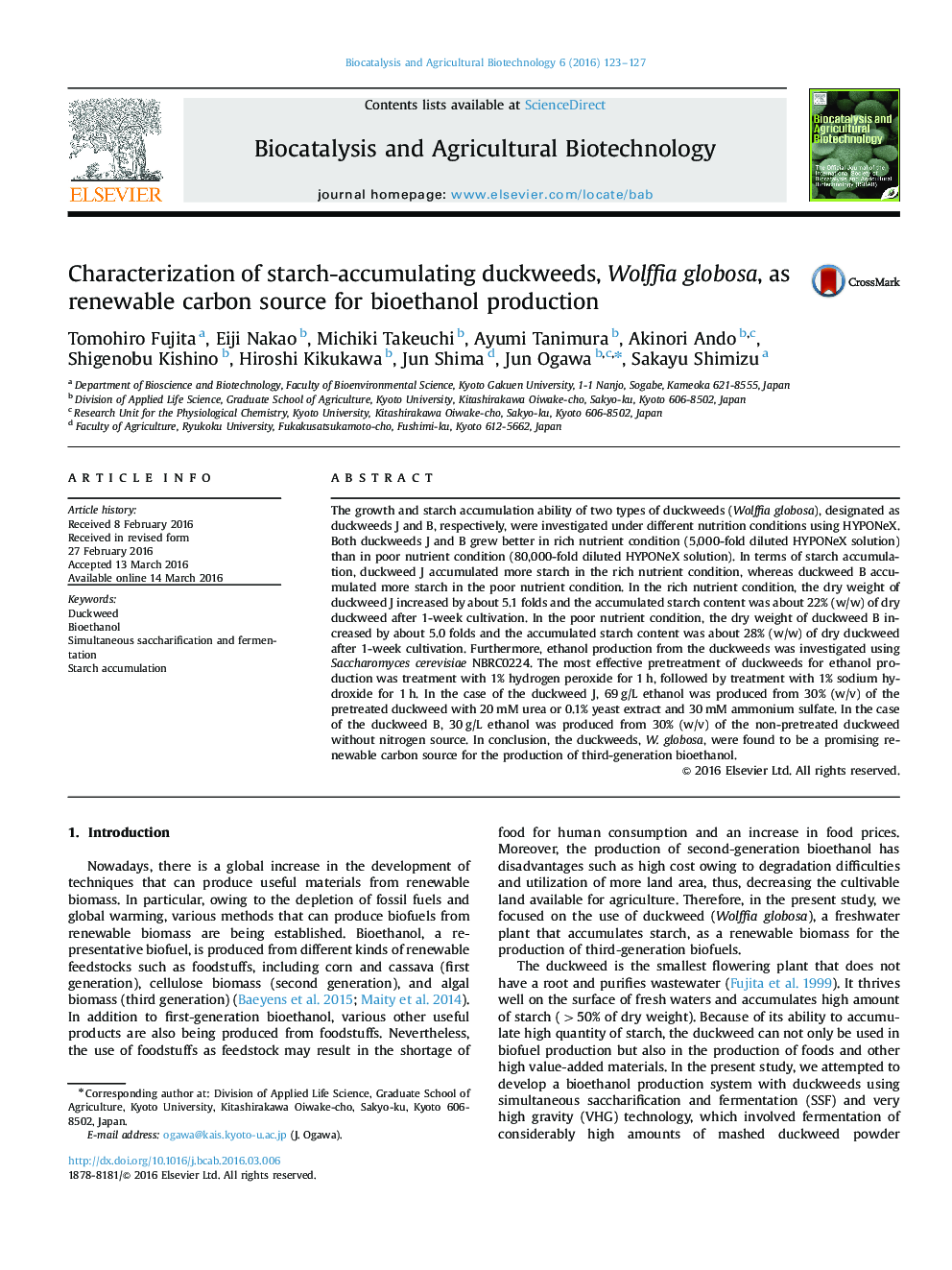| Article ID | Journal | Published Year | Pages | File Type |
|---|---|---|---|---|
| 2075389 | Biocatalysis and Agricultural Biotechnology | 2016 | 5 Pages |
The growth and starch accumulation ability of two types of duckweeds (Wolffia globosa), designated as duckweeds J and B, respectively, were investigated under different nutrition conditions using HYPONeX. Both duckweeds J and B grew better in rich nutrient condition (5,000-fold diluted HYPONeX solution) than in poor nutrient condition (80,000-fold diluted HYPONeX solution). In terms of starch accumulation, duckweed J accumulated more starch in the rich nutrient condition, whereas duckweed B accumulated more starch in the poor nutrient condition. In the rich nutrient condition, the dry weight of duckweed J increased by about 5.1 folds and the accumulated starch content was about 22% (w/w) of dry duckweed after 1-week cultivation. In the poor nutrient condition, the dry weight of duckweed B increased by about 5.0 folds and the accumulated starch content was about 28% (w/w) of dry duckweed after 1-week cultivation. Furthermore, ethanol production from the duckweeds was investigated using Saccharomyces cerevisiae NBRC0224. The most effective pretreatment of duckweeds for ethanol production was treatment with 1% hydrogen peroxide for 1 h, followed by treatment with 1% sodium hydroxide for 1 h. In the case of the duckweed J, 69 g/L ethanol was produced from 30% (w/v) of the pretreated duckweed with 20 mM urea or 0.1% yeast extract and 30 mM ammonium sulfate. In the case of the duckweed B, 30 g/L ethanol was produced from 30% (w/v) of the non-pretreated duckweed without nitrogen source. In conclusion, the duckweeds, W. globosa, were found to be a promising renewable carbon source for the production of third-generation bioethanol.
